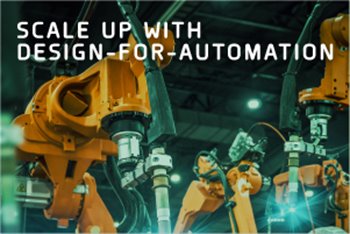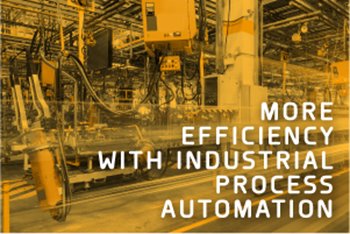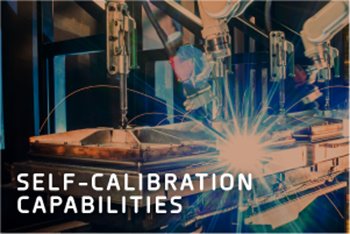Automation for Manufacturing: 3 Key Opportunities to Drive Manufacturing Efficiency
The Industrial Internet of Things (IIoT) has become a buzzword these last few years. However, that doesn’t necessarily mean that every manufacturer has been able to take full advantage of all it has to offer. Here are three key opportunities to bring innovation to product design and production utilizing automated manufacturing
SOURCE: Plexus Blog
From large manufacturing plants run almost entirely by robots, to small companies looking to improve a few key production processes, industrial process automation is changing the face of manufacturing in ways that were previously unimaginable. However, finding the best approach to digitally transform and automate a business can be particularly challenging for those companies producing highly complex products and facing demanding regulatory requirements. In the end, it comes down to two questions for manufacturers: What are the biggest opportunities for my organization? And, how can we implement them?
The potential of digital transformation in the manufacturing industry expands to the entire organization – everything from R&D to product design to production and supply chain management. Adopting automation on a smaller scale, following a step-by-step approach therefore makes sense. Let’s zero in on product design and production and look at three examples where automation efforts in the manufacturing process resulted in an improved product design, lower costs and a higher level of product quality.
Scale up with design-for-automation
 Focusing on getting production up and running before turning attention to automation for manufacturing can have inherent challenges – like when a manufacturer discovers the product it is making is not compatible with its automation systems, resulting in costly changes. Furthermore, when a manufacturer needs to verify and validate a manual assembly process and then an automated assembly process, their qualification costs can double. Design-for-Automation can help to avoid these problems and ensure a smooth transition from prototype to production.
Focusing on getting production up and running before turning attention to automation for manufacturing can have inherent challenges – like when a manufacturer discovers the product it is making is not compatible with its automation systems, resulting in costly changes. Furthermore, when a manufacturer needs to verify and validate a manual assembly process and then an automated assembly process, their qualification costs can double. Design-for-Automation can help to avoid these problems and ensure a smooth transition from prototype to production.
The goal of Design-For-Automation is to plan for automation in the initial phases of product design. While the design team is still in the initial concept stage, the automation team can simultaneously begin testing different parts on the manufacturing floor. Are cameras able to identify the components? Can a robot pick it up? How does it work with the robot feeder system, vibratory inbound and the conveyer belt? Changes such as color, markers or additional mount systems and holders are easy to do early on, but can cost ten times more once production has started. The best practice is to evaluate the automation solution during the initial, small quantities of pre-production and then optimize it as it goes along.
Launching with automation for manufacturing also allows for a speedy ramp-up in volume if demand increases faster than expected – with significantly less labor demand and redundancy implementation for multiple assembly lines. How would this work in practice? Let’s look at the design and manufacturing of a beverage vending machine. In order to ramp-up the production volume, the manufacturer worked with Plexus to automate the manufacturing solution. A key focus was placed on the assembly of the pumps, which distribute the different beverages. As each vending machine contained multiple pumps, the manual assembly was overly time consuming. Design and production teams worked in tandem to develop an automated system to optimize the process, with robots picking, placing and assembling the pumps more efficiently and with a higher level of precision. This high level of automation made it possible to ramp-up the volume by reducing assembly time and costs and making the overall production more efficient. It also allowed the customer to achieve the targeted price point for the vending machines.
More efficiency with industrial process automation
 By tapping into the power of data and process automation technologies, IIoT technologies can remove the potential for human error from the production process. What does that mean for manufacturers? More efficient production, a lower total cost of ownership and higher product quality.
By tapping into the power of data and process automation technologies, IIoT technologies can remove the potential for human error from the production process. What does that mean for manufacturers? More efficient production, a lower total cost of ownership and higher product quality.
A classic example for this is PCB assembly. In one case, Plexus helped a manufacturer to equip a masking system with an intelligent dispenser to ensure circuit boards on the production line received the proper protective coating. Previously, workers were trained to manually mask each unique circuit board. With the new system, all the circuit boards could be masked through the programmed system. It did not matter which circuit boards came down the line or in what order – the masking system was able to identify which one needed to be masked and in what configuration. Automating this process has improved efficiency on the line and reduced the risk of human error, delivering higher quality, repeatable results.
In another example, a cobot (collaborative robot) was used to automate the dispensing of the protective coating on metal detectors – a process previously managed by workers. Doing so helped not only improve efficiencies, but also substantially improved product quality.
Self-calibration capabilities
 Opportunity abounds for robotic process automation in the manufacturing industry. Rapid advances in robotics, artificial intelligence and machine learning are enabling machines to match or outperform humans in a range of work activities, including ones requiring cognitive capabilities.
Opportunity abounds for robotic process automation in the manufacturing industry. Rapid advances in robotics, artificial intelligence and machine learning are enabling machines to match or outperform humans in a range of work activities, including ones requiring cognitive capabilities.
Robots with machine vision can enable higher levels of product quality and get a product to market faster. The machine vision acts as the robots’ eyes, helping them pick, place, assemble and even inspect parts to a high degree of accuracy. Yet, as powerful as machine vision is, it still can be susceptible to mistakes that can affect production. If a robot is bumped, for example, its machine-vision camera can shift, potentially leading to the robot to choose parts incorrectly or misplace them. This is where self-calibration capabilities can add additional quality into machine-vision systems – and deliver higher quality to customers.
How it works: The robot continually performs routine self-checks to confirm it is in a position where it can pick and place parts to a certain degree of accuracy. If the self-check fails and the robot discovers its field of view has shifted, it automatically recalibrates itself. As an added quality check, a human operator can confirm the robot is properly recalibrated before it resumes operating. Advances in automation, like self-calibrating robots, are helping to push production toward a future where zero defects are possible.
Whether automating product design and development or working towards digital transformation for manufacturing, many organizations bring in an external partner to leverage the latest IIoT data and digital technologies across a product’s life cycle. Doing so allows companies to tap into industrial process automation best practices and work with a partner that can help them anticipate unforeseen challenges that delay getting products to market. It’s a win-win: eternal experts can bring valuable insights and mature technologies from their own digital transformation experience, while customers can innovate and no longer have to worry about those two questions of what and how to automate. The outcome is worth it in any case: improved product designs, faster time to market, better quality and a step further on the IIoT agenda.











